 Summertime is when families enjoy a break, relax, maybe get away. It’s often a slower time of year, where students can give their brains a rest and even enjoy time at summer camp, with friends and loved ones. Conversely, in the weeks between late June and early September, school administrators find little time for relaxation as they work to review the past year, make changes for the upcoming year and get major construction and enhancement projects completed before Labor Day hits and the new influx of students arrive.
Summertime is when families enjoy a break, relax, maybe get away. It’s often a slower time of year, where students can give their brains a rest and even enjoy time at summer camp, with friends and loved ones. Conversely, in the weeks between late June and early September, school administrators find little time for relaxation as they work to review the past year, make changes for the upcoming year and get major construction and enhancement projects completed before Labor Day hits and the new influx of students arrive.
Most Princeton residents send their children to schools in Princeton proper or the immediate surrounding area. More than 20 such schools have been going through this process and are now tidying things up, getting everything in order to open their doors for the new school year.
PROJECTS AT PRINCETON’S PUBLIC SCHOOLS
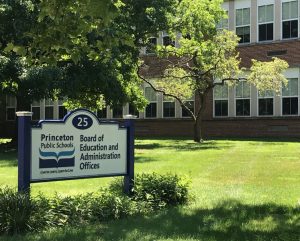 Princeton Public Schools likely had a longer “to-do” list than others, as it encompasses six schools and their buildings (plus the administrative building on Valley Road). With predicted enrollment for 2024-2025 at 3,651, it is the largest school entity in town. The district had to not only do the usual annual upkeep and adjustments but also complete a list of items remaining from the previous referendum (before a new referendum is expected to go to voters in January 2025).
Princeton Public Schools likely had a longer “to-do” list than others, as it encompasses six schools and their buildings (plus the administrative building on Valley Road). With predicted enrollment for 2024-2025 at 3,651, it is the largest school entity in town. The district had to not only do the usual annual upkeep and adjustments but also complete a list of items remaining from the previous referendum (before a new referendum is expected to go to voters in January 2025).
As far as physical enhancements go, all four public elementary schools and Princeton Middle School have completed wireless upgrades that many hope will offer faster and more reliable internet. The same is expected to be completed at the high school this month, which should eliminate dead spots and slow connections of the past.
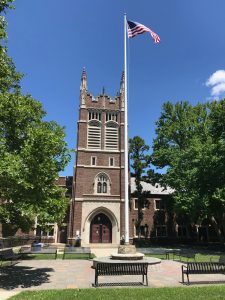 The major construction projects of summer are currently underway at Princeton High School, where new security vestibules are being built at both the Tower and PAC (Performing Arts Center) entrances. Simultaneously, crews are making upgrades to the high school cafeteria, which include redesigned food stations, new furniture, better acoustics and, by creating more usable square footage, hoping to offer more seating options as well. These are anticipated to be completed just before school opens for the fall.
The major construction projects of summer are currently underway at Princeton High School, where new security vestibules are being built at both the Tower and PAC (Performing Arts Center) entrances. Simultaneously, crews are making upgrades to the high school cafeteria, which include redesigned food stations, new furniture, better acoustics and, by creating more usable square footage, hoping to offer more seating options as well. These are anticipated to be completed just before school opens for the fall.
In the classrooms, students can expect to see some changes in their ELA (English Language Arts) and Math classes, designed to align with the new NJ standards. Those in grades 6-12 will also experience different class lengths/times from what they knew last year, with new schedules ahead.
BUILDING OUT OUR SCHOOLS
Beyond Princeton High School, construction teams have been going non-stop this summer as numerous other local schools have major projects completed or underway.
 Stuart Country Day School of the Sacred Heart, home to girls from preschool through grade 12, is opening The Cor Cordis Center for Exceptional Leadership where learning, wellness and support will be centrally provided. As teenage girls face increasing complexities, the reimagined and modernized space aims to be a hub of opportunity and assistance, accompanied by a new wellness curriculum to help students get through and go further.
Stuart Country Day School of the Sacred Heart, home to girls from preschool through grade 12, is opening The Cor Cordis Center for Exceptional Leadership where learning, wellness and support will be centrally provided. As teenage girls face increasing complexities, the reimagined and modernized space aims to be a hub of opportunity and assistance, accompanied by a new wellness curriculum to help students get through and go further.
Enhancing its commitment to wellness, Stuart is also entering its 2nd year of having a “phone free” policy for all students grades 5-12. After one year of doing so, the school and students found time and space away from the device helped students to focus and, be more engaged and present.
 About five miles away, there is a brand-new STEM lab opening at Princeton Junior School (PJS) in September. The free-standing building is located between the main building and their newly built Performing Arts Center. The school is excited for their champion Odyssey of the Mind Teams to utilize this new space – this past spring the Grade 5 team placed 1st at State Finals and 6th at the World Finals!
About five miles away, there is a brand-new STEM lab opening at Princeton Junior School (PJS) in September. The free-standing building is located between the main building and their newly built Performing Arts Center. The school is excited for their champion Odyssey of the Mind Teams to utilize this new space – this past spring the Grade 5 team placed 1st at State Finals and 6th at the World Finals!
PJS is also looking forward to being home to a pilot program with Center for Supportive Schools (which began at Princeton High School). Its Peer Leadership Program is coming to an elementary school for the first time, enabling sixth graders to act as mentors to students in 1st and 2nd grade.
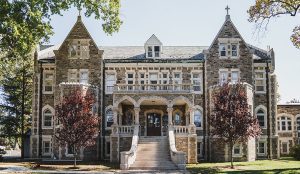 Wilberforce School, on Mapleton Road, is working to get construction complete on its new gym, adding new locker rooms, weight room, a studio and accessibility ramp. The arts are also getting an upgrade inside the main school, where students can make use of additional classrooms, a new theater and choir rehearsal room. In these heightened times, efforts have been made throughout the summer to additionally enhance security, such as increased camera coverage, securing perimeters and ensuring access control on all doors.
Wilberforce School, on Mapleton Road, is working to get construction complete on its new gym, adding new locker rooms, weight room, a studio and accessibility ramp. The arts are also getting an upgrade inside the main school, where students can make use of additional classrooms, a new theater and choir rehearsal room. In these heightened times, efforts have been made throughout the summer to additionally enhance security, such as increased camera coverage, securing perimeters and ensuring access control on all doors.
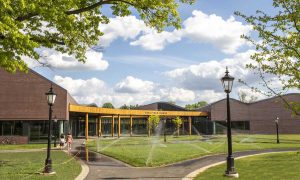 Athletic improvements can also be found at The Lawrenceville School campus, with completion of the new Tsai Field House. This 250,000 square-foot athletic, dining and social hub includes Tsai Dining Hall, the new dining facility that opened last fall, as well as athletic and fitness areas. Inside one will find the new indoor track and field arena, swimming pool, ice rink, basketball court, wrestling arena, squash courts, and community fitness rooms. To make sure loved ones far away don’t miss anything, live stream capabilities have also been enabled throughout.
Athletic improvements can also be found at The Lawrenceville School campus, with completion of the new Tsai Field House. This 250,000 square-foot athletic, dining and social hub includes Tsai Dining Hall, the new dining facility that opened last fall, as well as athletic and fitness areas. Inside one will find the new indoor track and field arena, swimming pool, ice rink, basketball court, wrestling arena, squash courts, and community fitness rooms. To make sure loved ones far away don’t miss anything, live stream capabilities have also been enabled throughout.
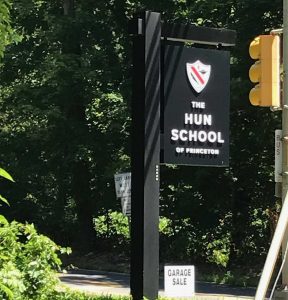 If you drive up State Highway 206 and turn onto Edgerstoune Road, you will notice that a building has come down on The Hun School of Princeton campus. This is to make room for a new 41,000 square foot residence hall to be constructed, intending to house 114 students and 12 faculty members for fall 2025. With modern comforts such as individual shower rooms, lounges, kitchenettes, and sound treated walls, the hall will also be LEED standard and include solar panels and state-of-the-art air handling.
If you drive up State Highway 206 and turn onto Edgerstoune Road, you will notice that a building has come down on The Hun School of Princeton campus. This is to make room for a new 41,000 square foot residence hall to be constructed, intending to house 114 students and 12 faculty members for fall 2025. With modern comforts such as individual shower rooms, lounges, kitchenettes, and sound treated walls, the hall will also be LEED standard and include solar panels and state-of-the-art air handling.
Hun is also working to ensure its graduates are financially literate. A new elective course will be offered this year teaching topics such as saving your money, how to budget, investment strategies and more. In spring 2025, there will be required standards spread throughout the curriculum and specific competency skills to be met by graduation.
MORE THAN PHYSICAL CHANGES
Much of what guides a student towards graduation is the way a school is run, the directions it takes, and the leadership students learn from. Around Princeton there are some major changes at the top that have schools excited.
 There is new leadership at Chapin School, where Dr. Amy Moviel has come to serve as Director of PreK-Grade 8. In that role, she will work with Head of School Bill Ennist, who came to Chapin in 2023. Moviel comes from Florida for this newly created role, directing the curriculum and faculty.
There is new leadership at Chapin School, where Dr. Amy Moviel has come to serve as Director of PreK-Grade 8. In that role, she will work with Head of School Bill Ennist, who came to Chapin in 2023. Moviel comes from Florida for this newly created role, directing the curriculum and faculty.
 Not too far away, new talent is also in place at Princeton Academy of the Sacred Heart (PASH). It was nearly one-year ago when the school announced it would be closing its doors at the end of the year. Instead the support of parents, staff, faculty and community donors provided enough funding for it to stay open. After creating a conservative financial plan and bringing in Kathy Humora as Interim Head of School, they’ve since added two new members to the leadership team to support her: Maggie Kelley, Director of Institutional Advancement and Gleny Burgos, Director of Finance and Operations. Together the leaders are updating the curriculum organization model, which includes the learning plan, targets and resources. They are also creating a live map teachers can adjust, and parents can log into for information.
Not too far away, new talent is also in place at Princeton Academy of the Sacred Heart (PASH). It was nearly one-year ago when the school announced it would be closing its doors at the end of the year. Instead the support of parents, staff, faculty and community donors provided enough funding for it to stay open. After creating a conservative financial plan and bringing in Kathy Humora as Interim Head of School, they’ve since added two new members to the leadership team to support her: Maggie Kelley, Director of Institutional Advancement and Gleny Burgos, Director of Finance and Operations. Together the leaders are updating the curriculum organization model, which includes the learning plan, targets and resources. They are also creating a live map teachers can adjust, and parents can log into for information.
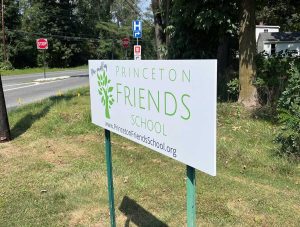 At Princeton Friends School (PFS) they have promoted from within to make Kofi Obeng Assistant Head for Community and Belonging, where he will support students social, emotional and personal growth. The school is also grateful for several new bikes, purchased with a gift from a PFS family, that will be used for exploration and experiential learning, in classrooms and around Princeton.
At Princeton Friends School (PFS) they have promoted from within to make Kofi Obeng Assistant Head for Community and Belonging, where he will support students social, emotional and personal growth. The school is also grateful for several new bikes, purchased with a gift from a PFS family, that will be used for exploration and experiential learning, in classrooms and around Princeton.
BEYOND THE CLASSROOMS
There is even more learning taking place beyond the classrooms as two other local schools incorporate updates they hope will better prepare their students for the future.
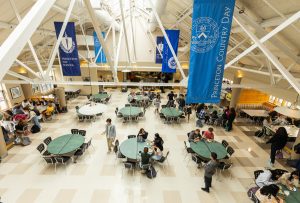 With a Presidential election on the horizon, Princeton Day School is introducing a formal statement on civil discourse that will be accompanied by opportunities for employees and students to learn skills, practice and listen to differing viewpoints throughout the curriculum and school life. By doing so, it is their hope students will have better conversations within school and obtain valuable skills to live in a diverse world.
With a Presidential election on the horizon, Princeton Day School is introducing a formal statement on civil discourse that will be accompanied by opportunities for employees and students to learn skills, practice and listen to differing viewpoints throughout the curriculum and school life. By doing so, it is their hope students will have better conversations within school and obtain valuable skills to live in a diverse world.
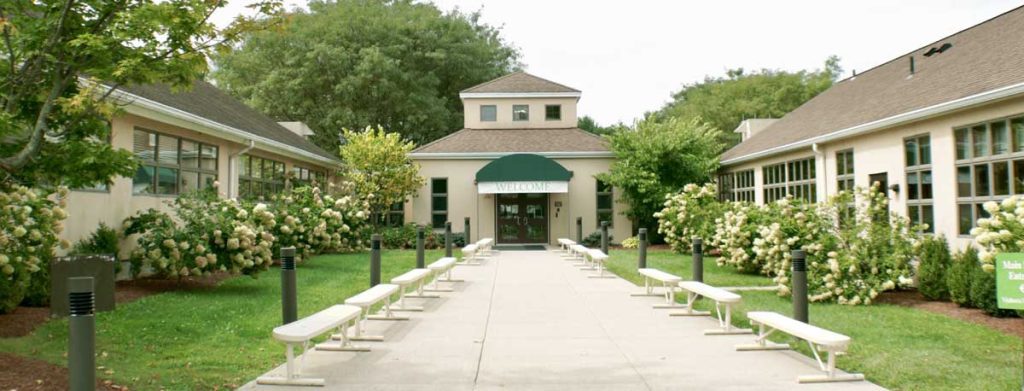 Another way to help its children become fully functioning members of society, Princeton Montessori School is working their foundational lessons into various parts of their curriculum. For the upcoming school year, this will include two original musicals written by their Artist-in-Residence and Emmy-award-winning performer Alex Mitnick. Upper Elementary (grades 3-5) will perform a musical interpretation of The Five Great Lessons, the foundation of Montessori elementary. Middle School students will take part in a multi-media musical that aligns with their curriculum in American history, detailing the writing of the Constitution, explaining the separation of powers and ending with what modern Democracy means in America.
Another way to help its children become fully functioning members of society, Princeton Montessori School is working their foundational lessons into various parts of their curriculum. For the upcoming school year, this will include two original musicals written by their Artist-in-Residence and Emmy-award-winning performer Alex Mitnick. Upper Elementary (grades 3-5) will perform a musical interpretation of The Five Great Lessons, the foundation of Montessori elementary. Middle School students will take part in a multi-media musical that aligns with their curriculum in American history, detailing the writing of the Constitution, explaining the separation of powers and ending with what modern Democracy means in America.
Additionally, a new podcast titled, “Growing Together: A Montessori Approach to Parenting,” is coming out with its first episode later this month on Spotify. The content aims to help others with lessons on parenting the Montessori way on topics like school separation, eating, sleeping and more.
OTHER LOCAL CHANGES
There are several other area schools including Princeton Charter School, French American School, The Lewis School, YingHua International School, St. Paul School, Apple Montessori, and Princeton Waldorf that are not detailed above, and each certainly have their share of exciting changes awaiting students this fall. Unfortunately, due to varying circumstances, they were not able to provide us with the details by press time.
For most, as families wrap up their summers, buy new backpacks and prepare for another year of education, you can now be prepared for the changes that await when you return to the classroom in September.
Lisa Jacknow spent years working in national and local news in and around New York City before moving to Princeton. Working as both a TV producer and news reporter, Lisa came to this area to focus on the local news of Mercer County at WZBN-TV. In recent years, she got immersed in the Princeton community by serving leadership roles at local schools in addition to volunteering for other local non-profits. In her free time, Lisa loves to spend time with her family, play tennis, sing and play the piano. A graduate of the S. I. Newhouse School of Public Communications at Syracuse University, Lisa was raised just north of Boston, Massachusetts but has lived in the tri-state area since college. She is excited to be Editor and head writer for Princeton Perspectives!
 Trying to take advantage of the final weeks of summer? Ready for fall to begin? As summer winds down and many prepare to return to school and busier lives, Princeton Perspectives brings you a closer look with The Inside Scoop – What’s Happening Around Town. From the realities of paying your property taxes to back-to-school news, we also are sharing some more in-depth detail on the things you see or pass on your way around town.
Trying to take advantage of the final weeks of summer? Ready for fall to begin? As summer winds down and many prepare to return to school and busier lives, Princeton Perspectives brings you a closer look with The Inside Scoop – What’s Happening Around Town. From the realities of paying your property taxes to back-to-school news, we also are sharing some more in-depth detail on the things you see or pass on your way around town.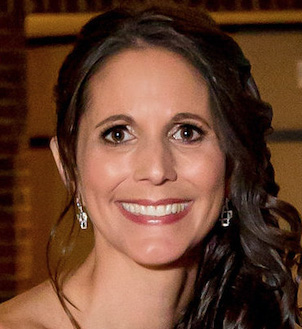
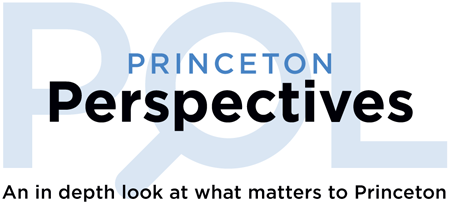
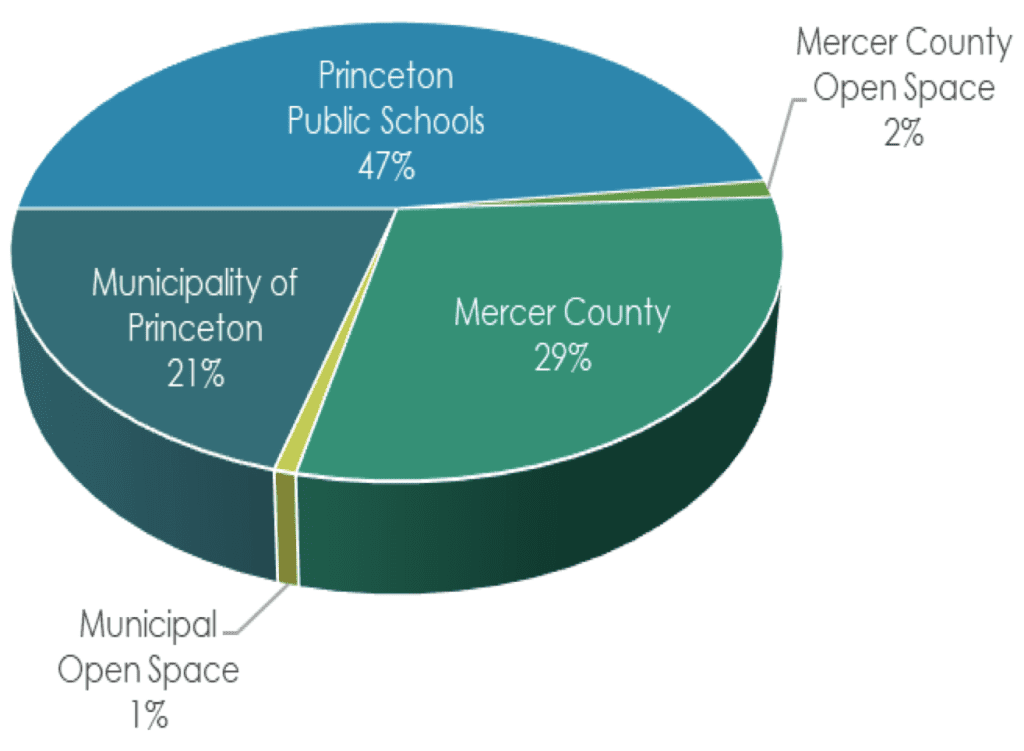
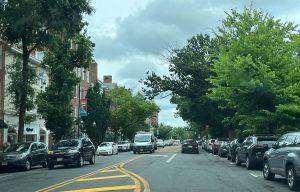 To understand how municipal tax bills are formulated, it is important to first understand who is paying taxes. Princeton is home to numerous schools, charitable organizations, cemeteries and there is a lot of property in the area owned by the town or state. Those, in addition to disabled veterans, senior and affordable housing and other exempt entities, bring a lot of important value to Princeton – but they do not bring in tax money. While there are some payments in lieu of taxes given to the municipal coffers, the exemption of 882 entities means the tax burden is split amongst the 7,991 properties that make up the tax base.
To understand how municipal tax bills are formulated, it is important to first understand who is paying taxes. Princeton is home to numerous schools, charitable organizations, cemeteries and there is a lot of property in the area owned by the town or state. Those, in addition to disabled veterans, senior and affordable housing and other exempt entities, bring a lot of important value to Princeton – but they do not bring in tax money. While there are some payments in lieu of taxes given to the municipal coffers, the exemption of 882 entities means the tax burden is split amongst the 7,991 properties that make up the tax base. The 2024 municipal budget is $74,514,097, and only 54% of that comes from taxes. As the Budget Newsletter details, there is other revenue from “parking and traffic enforcement fees, sewer fees, and fire and housing inspection fees.” Additional monies come from reserves, state aid, grants and payments in lieu of taxes (including Princeton University’s contribution), as well as from some of the nonprofit and other entities mentioned above. Princeton is currently sitting on a surplus that has increased $3.5 million, so why isn’t more of that used to keep taxes lower?
The 2024 municipal budget is $74,514,097, and only 54% of that comes from taxes. As the Budget Newsletter details, there is other revenue from “parking and traffic enforcement fees, sewer fees, and fire and housing inspection fees.” Additional monies come from reserves, state aid, grants and payments in lieu of taxes (including Princeton University’s contribution), as well as from some of the nonprofit and other entities mentioned above. Princeton is currently sitting on a surplus that has increased $3.5 million, so why isn’t more of that used to keep taxes lower?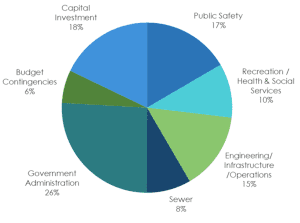
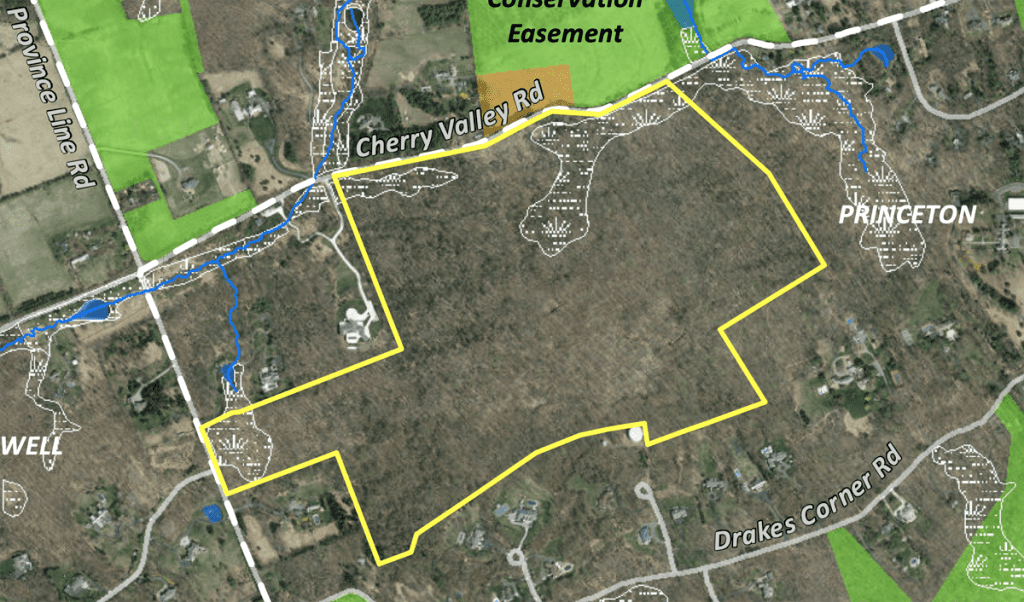
 Summertime is when families enjoy a break, relax, maybe get away. It’s often a slower time of year, where students can give their brains a rest and even enjoy time at summer camp, with friends and loved ones. Conversely, in the weeks between late June and early September, school administrators find little time for relaxation as they work to review the past year, make changes for the upcoming year and get major construction and enhancement projects completed before Labor Day hits and the new influx of students arrive.
Summertime is when families enjoy a break, relax, maybe get away. It’s often a slower time of year, where students can give their brains a rest and even enjoy time at summer camp, with friends and loved ones. Conversely, in the weeks between late June and early September, school administrators find little time for relaxation as they work to review the past year, make changes for the upcoming year and get major construction and enhancement projects completed before Labor Day hits and the new influx of students arrive. Princeton Public Schools likely had a longer “to-do” list than others, as it encompasses six schools and their buildings (plus the administrative building on Valley Road). With predicted enrollment for 2024-2025 at 3,651, it is the largest school entity in town. The district had to not only do the usual annual upkeep and adjustments but also complete a list of items remaining from the previous referendum (before a new referendum is expected to go to voters in January 2025).
Princeton Public Schools likely had a longer “to-do” list than others, as it encompasses six schools and their buildings (plus the administrative building on Valley Road). With predicted enrollment for 2024-2025 at 3,651, it is the largest school entity in town. The district had to not only do the usual annual upkeep and adjustments but also complete a list of items remaining from the previous referendum (before a new referendum is expected to go to voters in January 2025). The major construction projects of summer are currently underway at Princeton High School, where new security vestibules are being built at both the Tower and PAC (Performing Arts Center) entrances. Simultaneously, crews are making upgrades to the high school cafeteria, which include redesigned food stations, new furniture, better acoustics and, by creating more usable square footage, hoping to offer more seating options as well. These are anticipated to be completed just before school opens for the fall.
The major construction projects of summer are currently underway at Princeton High School, where new security vestibules are being built at both the Tower and PAC (Performing Arts Center) entrances. Simultaneously, crews are making upgrades to the high school cafeteria, which include redesigned food stations, new furniture, better acoustics and, by creating more usable square footage, hoping to offer more seating options as well. These are anticipated to be completed just before school opens for the fall.
 About five miles away, there is a brand-new STEM lab opening at
About five miles away, there is a brand-new STEM lab opening at 
 Athletic improvements can also be found at
Athletic improvements can also be found at  If you drive up State Highway 206 and turn onto Edgerstoune Road, you will notice that a building has come down on
If you drive up State Highway 206 and turn onto Edgerstoune Road, you will notice that a building has come down on  There is new leadership at
There is new leadership at  Not too far away, new talent is also in place at
Not too far away, new talent is also in place at  At
At  With a Presidential election on the horizon,
With a Presidential election on the horizon,  Another way to help its children become fully functioning members of society,
Another way to help its children become fully functioning members of society,  It is summer, peak wedding season. As we attend, plan for or recall our own weddings, there is one common saying that comes to mind. It is from an old English rhyme, meant to provide for a future of happiness. As many begin their futures together this summer, we also look forward to a happy future for everyone around Princeton. So, we chose to incorporate this saying into the July issue of Princeton Perspectives,
It is summer, peak wedding season. As we attend, plan for or recall our own weddings, there is one common saying that comes to mind. It is from an old English rhyme, meant to provide for a future of happiness. As many begin their futures together this summer, we also look forward to a happy future for everyone around Princeton. So, we chose to incorporate this saying into the July issue of Princeton Perspectives, 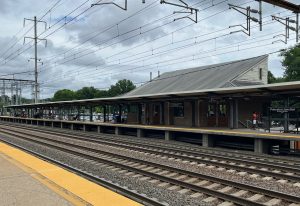 Sometimes old things demonstrate their strength and virility and other times, they show their weakness and frailty. Today’s old Northeast Corridor train line, which is America’s busiest line and runs in full 457 miles from Washington D.C. to Boston, was constructed between 1830 and 1917. Though the strength of its tracks enable it to still operate, it is very much showing its age – at least on the stretch between New Jersey and New York.
Sometimes old things demonstrate their strength and virility and other times, they show their weakness and frailty. Today’s old Northeast Corridor train line, which is America’s busiest line and runs in full 457 miles from Washington D.C. to Boston, was constructed between 1830 and 1917. Though the strength of its tracks enable it to still operate, it is very much showing its age – at least on the stretch between New Jersey and New York.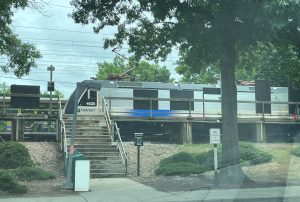 Something is not working right within the infrastructure owned by
Something is not working right within the infrastructure owned by 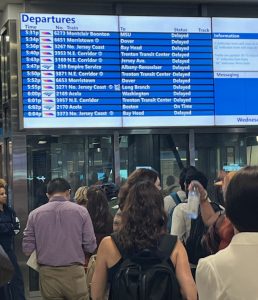 “We went through a period of 12 consecutive commutes with issues. Not just a small delay on the train but massive shutdowns where you have no idea if you’re getting home (or to work),” shares one local commuter, who has been commuting nearly daily since 2003. “A few years ago, NJT had what we recall as the ‘summer of hell’, but the difference there was a lot of the issues were planned work. Knowing an issue is coming, you can make alternate arrangements. This year these issues are unexpected; in many cases they start literally when you’re on your way to Penn Station.”
“We went through a period of 12 consecutive commutes with issues. Not just a small delay on the train but massive shutdowns where you have no idea if you’re getting home (or to work),” shares one local commuter, who has been commuting nearly daily since 2003. “A few years ago, NJT had what we recall as the ‘summer of hell’, but the difference there was a lot of the issues were planned work. Knowing an issue is coming, you can make alternate arrangements. This year these issues are unexpected; in many cases they start literally when you’re on your way to Penn Station.”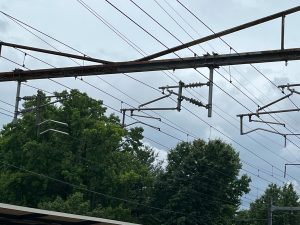 According to their statement, immediate actions being taken to try and resolve the issues include more frequent inspections of the tracks and overhead wiring structures between Trenton and New York City, installation of cameras to visually inspect the power connections, expanding inspections of overhead wire components through helicopter photography and a review of all of the issues with internal and external partners.
According to their statement, immediate actions being taken to try and resolve the issues include more frequent inspections of the tracks and overhead wiring structures between Trenton and New York City, installation of cameras to visually inspect the power connections, expanding inspections of overhead wire components through helicopter photography and a review of all of the issues with internal and external partners. The customers, many of whom reside in this area, want more than just an investigation. How do they explain when the train “dies” just outside of NY Penn Station and commuters have to get out and walk the tracks to get into the station? As of last year, Princeton Junction Station was the 6th most populated station in terms of ridership, servicing more than 86,000 people. Princeton resident, Rob Ehee, is one of them. He has been community from there into NYC for 19 years, 3-4 times per week and says whether the problem lays with Amtrak or NJT, it is time to own up and fix it.
The customers, many of whom reside in this area, want more than just an investigation. How do they explain when the train “dies” just outside of NY Penn Station and commuters have to get out and walk the tracks to get into the station? As of last year, Princeton Junction Station was the 6th most populated station in terms of ridership, servicing more than 86,000 people. Princeton resident, Rob Ehee, is one of them. He has been community from there into NYC for 19 years, 3-4 times per week and says whether the problem lays with Amtrak or NJT, it is time to own up and fix it. When problems are too disruptive, NJT cross honors tickets between its train and bus systems, hoping that will provide opportunities for commuters to get home. It also provides a link to help riders find options through
When problems are too disruptive, NJT cross honors tickets between its train and bus systems, hoping that will provide opportunities for commuters to get home. It also provides a link to help riders find options through  With a Fiscal Year (FY) 25 operating budget gap of $106.6 million dollars, NJT says they had to work to prepare for growth, solve current and long-term funding needs and meet future demand. Using a three-pronged approach of trying to be more efficient, the fare hike and taking advantage of Governor Murphy’s Corporate Transit Fee, included in the FY25 State budget, they hope to get on better footing.
With a Fiscal Year (FY) 25 operating budget gap of $106.6 million dollars, NJT says they had to work to prepare for growth, solve current and long-term funding needs and meet future demand. Using a three-pronged approach of trying to be more efficient, the fare hike and taking advantage of Governor Murphy’s Corporate Transit Fee, included in the FY25 State budget, they hope to get on better footing.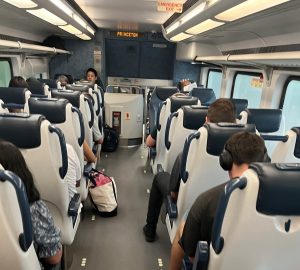 “The passengers are the ones who bear the brunt of it all. Frankly it’s inexcusable that NJT would continue to just blame Amtrak. Where is Governor Murphy through all of this? Where is all the money from the infrastructure bill? Supposed to be billions for Amtrak,” said a Princeton NJT commuter.
“The passengers are the ones who bear the brunt of it all. Frankly it’s inexcusable that NJT would continue to just blame Amtrak. Where is Governor Murphy through all of this? Where is all the money from the infrastructure bill? Supposed to be billions for Amtrak,” said a Princeton NJT commuter.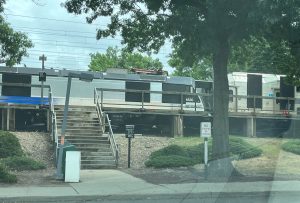 NJT also shared some additional longer-term plans to address the infrastructure which include “added resources to expedite testing of transformers in substations, pursuing additional grants to replace catenary, substations and transmission, signal lines, and to support capital renewal, as well as evaluating methods to expand overnight work windows with service adjustments to accelerate renewal and repairs.”
NJT also shared some additional longer-term plans to address the infrastructure which include “added resources to expedite testing of transformers in substations, pursuing additional grants to replace catenary, substations and transmission, signal lines, and to support capital renewal, as well as evaluating methods to expand overnight work windows with service adjustments to accelerate renewal and repairs.” Triumph Brewery had been a well-known Princeton establishment. In fact, it was issued the very first brewpub license in the state of New Jersey when it first opened on Nassau Street in 1995. Through the years, additional locations in Red Bank and New Hope have found great success as well. But, as owner Adam Rechnitz looked to the future (and opportunity provided), he decided to relocate and take over the old post office building in downtown Princeton. His brand-new brewpub, now named
Triumph Brewery had been a well-known Princeton establishment. In fact, it was issued the very first brewpub license in the state of New Jersey when it first opened on Nassau Street in 1995. Through the years, additional locations in Red Bank and New Hope have found great success as well. But, as owner Adam Rechnitz looked to the future (and opportunity provided), he decided to relocate and take over the old post office building in downtown Princeton. His brand-new brewpub, now named 

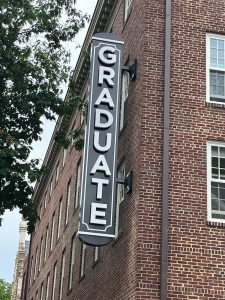 The coordination meetings that Triumph had to engage in with Princeton engineering were due in part to a new hotel being built simultaneously nearby on Nassau and Chambers Streets.
The coordination meetings that Triumph had to engage in with Princeton engineering were due in part to a new hotel being built simultaneously nearby on Nassau and Chambers Streets. 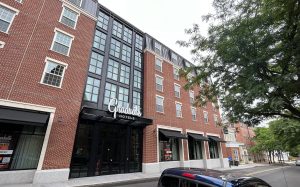 The Graduate hotel brand (found on or near over 30 college campuses across the country and UK) incorporates details from its nearby college or university into every aspect. The original structure that is housing Graduate Princeton was built by Princeton University as a student dormitory in 1918, so it provides an abundance of charm and history to pull from.
The Graduate hotel brand (found on or near over 30 college campuses across the country and UK) incorporates details from its nearby college or university into every aspect. The original structure that is housing Graduate Princeton was built by Princeton University as a student dormitory in 1918, so it provides an abundance of charm and history to pull from.
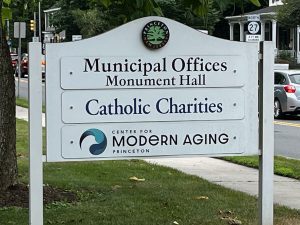 There is yet another opportunity that is rather new in Princeton but has been around elsewhere for a while – and that is
There is yet another opportunity that is rather new in Princeton but has been around elsewhere for a while – and that is 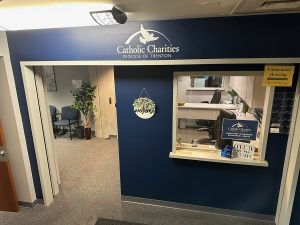 On an outpatient basis, the center offers individual therapy, medication management and offers nursing services to link individuals to primary care needs they may have. It also helps people address housing needs and food insecurity, providing case management services. Around since 1971, Catholic Charities has over 60 Behavioral Health programs working to overcome the stigma of mental health treatment and provide help. Princeton is its newest location.
On an outpatient basis, the center offers individual therapy, medication management and offers nursing services to link individuals to primary care needs they may have. It also helps people address housing needs and food insecurity, providing case management services. Around since 1971, Catholic Charities has over 60 Behavioral Health programs working to overcome the stigma of mental health treatment and provide help. Princeton is its newest location.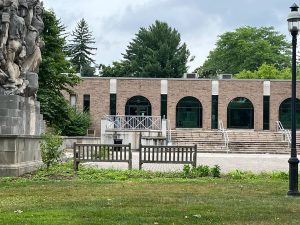 With eight people on site (including a psychiatrist, clinicians, office manager and those helping with housing and food insecurity), the center is there to help people on Mondays, Thursdays and Fridays from 9am-5pm and on Tuesdays and Wednesdays from 9am-8pm. Telehealth services are also available for those that can’t or choose not to visit in person. All those seeking help can contact the access center at 800-360-7711.
With eight people on site (including a psychiatrist, clinicians, office manager and those helping with housing and food insecurity), the center is there to help people on Mondays, Thursdays and Fridays from 9am-5pm and on Tuesdays and Wednesdays from 9am-8pm. Telehealth services are also available for those that can’t or choose not to visit in person. All those seeking help can contact the access center at 800-360-7711.